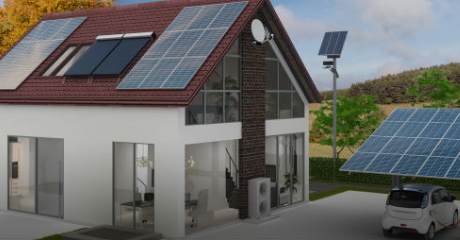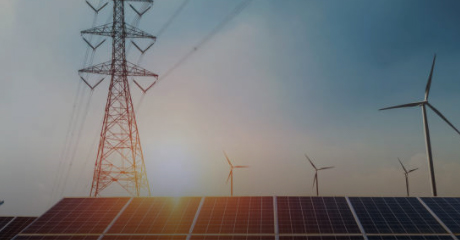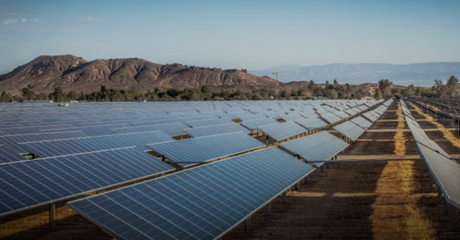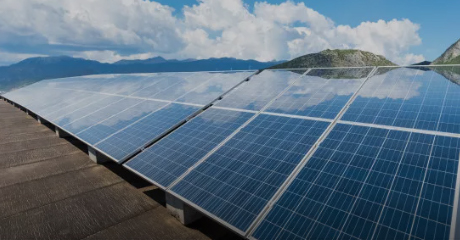BIPV Curtain Wall
Industry Decarbonization
![]()
Significantly increase the level of electrification of buildings for energy use. Actively promote the electrification of building cooling and heating, and create green buildings; perfect the market-oriented transformation mechanism, encourage the use of development of distributed energy and energy storage systems on building roofs and walls, and actualize two-way interaction with external energy systems.

BIPV Curtain Wall
Accelerate the promotion of zero-carbon power electrification for the transport sector. Encourage the generalization of EVs in the area of urban transportation, and probe into the generalization of electric trucks and hydrogen fuel vehicles in logistics; enhance the construction of distributed PV charging infrastructures, actively promote the development of electric rail transit, shore power at ports, etc., and establish integrated energy systems for transport with renewable energy as the main source of power.

PV Charging Pile
Intensively expand industrial electrification, and facilitate energy conservation and emission reduction. Enhance electrical equipment substitution, improve the integrated energy efficiency and green energy consumption level, and actualize the shift from the high-carbon model to a low-carbon model; boost the technological innovation and business model innovation, promote the development of integrated energy service through the implementation of energy conservation and industrial waste heat and residual pressure recovery, and create new ways of using energy that complement each other; take advantage of such technical means as "hydrogen energy + CCUS" to build advanced low-carbon recycling industrial systems in the steel, cement and coal chemical engineering sectors, create some replicable demonstration projects for electrical energy substitution for the key emission reduction targets in the industry, promote the large-scale application of technologies, and drive the widespread implementation of electric energy substitution in society.

PV Steel Works
The energy chemical engineering industry is an important producer and consumer of fossil energy, and an important driving force for China to cope with climate change. For China's oil and gas companies, "green hydrogen" will play a key role in the future energy transition in order to carry out a complete "decarbonization revolution". In addition to green hydrogen, the predominating paths of oil & gas decarbonization also include PV development in abandoned oil fields, PV refueling stations, gas filling stations, and hydrogen filling stations, PV commercial and industrial rooftops, PV + natural gas coupling, etc.

PV Development in Abandoned Oil Fields
For data center decarbonization, the goal of "carbon neutrality" could be achieved at four major levels, i.e., electricity decarbonization, terminal electrification + cleaning, energy conservation and efficiency improvement, and green emissions. Enterprises may achieve electricity decarbonization through energy storage system, PV, and UHV, and actualize terminal electrification and cleaning through prefabricated buildings, hydrogen fuel cells, etc.; prior to the full-penetration of zero carbon electricity, it's also possible to reduce emissions by reducing the consumption of electricity by equipment operation through technical means; achieve green emissions through actions such as bioplastics and plastic recycling.

PV Data Center